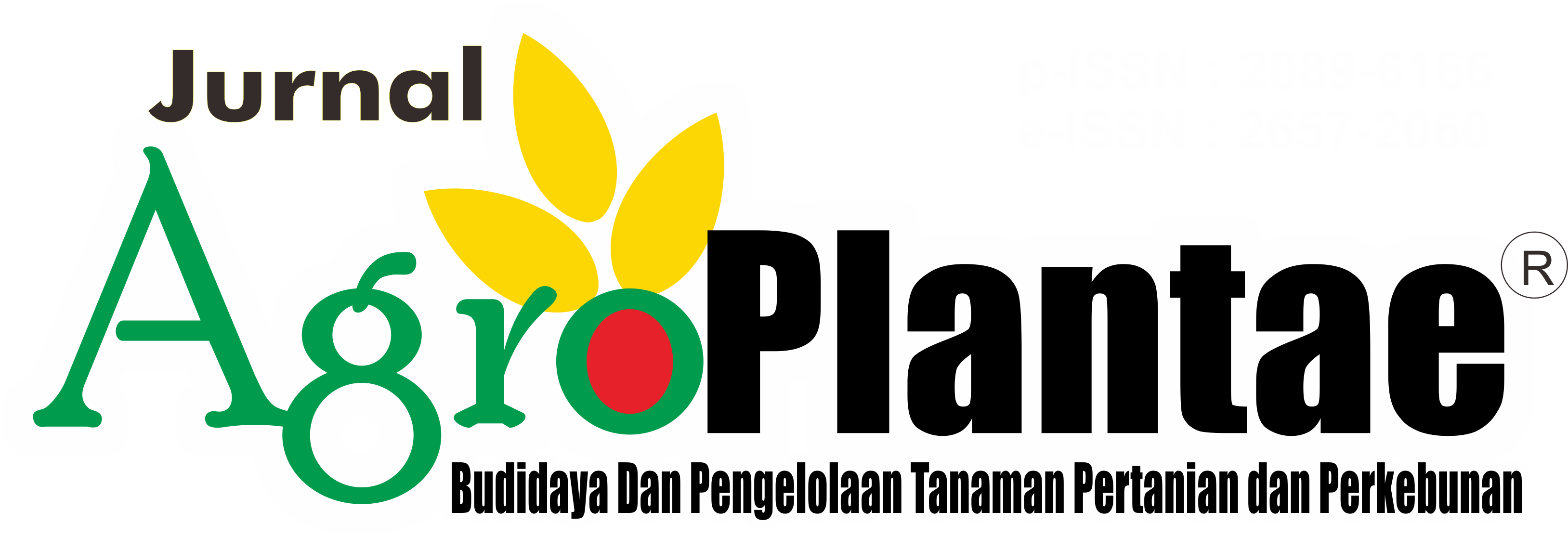UJI EFIKASI FUNGISIDA UNTUK PENGENDALIAN PENYAKIT HAWAR PELEPAH (Rhizoctonia solani Khun.) PADA TANAMAN PADI SECARA IN VITRO DAN IN VIVO
Abstract
Rhizoctonia solani Khun, is one of the fungi that causes important diseases in rice plants which can reduce rice production with a severity level of 6-52%. The aim of this research is to analyze the effectiveness of fungicide active ingredients in suppressing the development of R. solani disease. The research was carried out in March-July 2022. The method used was a Completely Randomized Design (CRD), in vitro testing was carried out with 10 treatments and 10 replications and in vivo testing was carried out in 9 treatments with 3 replications. Active fungicide treatments used: T1: Propinab 70%, T2: Trifloxystrobin 25% + Tebuconazole 50%, T3: Difenoconazole 250 g/l, T4: Azoxystrobin 200 g + Difenoconazole 125 g, T5: Difenoconazole 250 g, T6: Azoxystrobin 200 g + Difenoconazole 125 g/l, T7: Azoxystrobin 250 g/l + Difenoconazole 150 g/l, T8: Propiconazole 125% + Tricyclazole 400%, T9: Piraclostrobin 133 g/l + Epoxiconazole 50 g/l and T0= control without treatment. The parameters observed were calculating the mycelium diameter at 2 days after application (HSA) up to 14, calculating the percentage of attacks at 7 HSA1, 7 HSA2 and 14 HSA3. The results of the efficacy test showed that several fungicide active ingredients in controlling rice sheath blight (R. solani) in rice showed significant differences between treatments of fungicide active ingredients on the development of the pathogen. T2 active ingredient treatment: Trifloxystrobin 25% + Tebuconazole 50% provides the best efficacy test results in vitro and in vivo.








